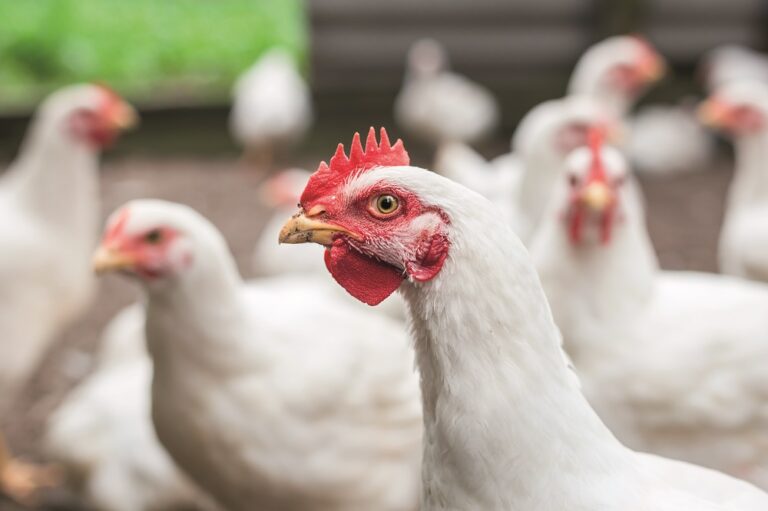The Animal Health & Welfare Pathway proposes radical market intervention that will shape the poultry industry for years to come. The industry is in for a big shake-up.
The Government has published a policy paper on the new Animal Health & Welfare Pathway, which outlines plans to “implement the Better Chicken Commitment” and for laying hens to “transition out of cages”.
Defra told Poultry Business it was “exploring the feasibility of providing voluntary financial support to help with the additional costs of those producing to the Better Chicken Commitment standard.”
The document states the Government wants to intervene in the market to “make it easier for consumers to purchase food that aligns with their values, by improving transparency and providing the industry with a level playing field to promote such products.”
The majority of consumers value high animal welfare, but this is not fully reflected in what they purchase, the Government said. “We are looking at potential market interventions such as, labelling and mandatory public disclosure that could improve the accessibility, availability and affordability of higher welfare products for consumers, while driving positive procurement choices by retailers.”
The document, published on 22 February, is still light on concrete details. Asked about how much month had been put aside to fund the proposals, a spokeswoman for Defra told PB, “there has been no decision on allocation of funding for areas supporting poultry producers.”
The document states producers will be expected to “adopt welfare-improving technology to support environmental and behavioural monitoring and better stockmanship” and in egg production producers will need to “improve feather cover management” paving the way to reduce “the need for infra-red beak trimming”.
Again, while the document sets out ambitions, there are no concrete details about timescales. A spokeswoman told PB: “The Government is committed to ending the practice of beak trimming day old chicks as soon as possible. However, a ban at this time, without all producers having the solutions in place to reduce outbreaks of injurious pecking, would risk significant injury and death of the birds, and therefore would be worse for laying hen welfare.”
Keel bone health will be another area of focus to “reduce laying hens’ susceptibly to painful fractures which can occur in all production systems,” the document states.
Funding should become available in late 2022 to help support producers, Defra said. Farmers can apply for grants to co-fund capital investments to support the delivery of the published health and welfare priorities. This will include: smaller grants, where farmers can select from a list of equipment and technology items, and larger grants, for bespoke infrastructure projects such as new housing, building upgrades and pasture improvements
“The competitive grants will initially be open to livestock farmers with cattle, pigs, sheep, meat chickens and laying hens. In future years of the programme, we hope to expand to other livestock farmers such as those with goats, ducks, or turkeys,” the document states.
Producers will need to agree with their vet the most appropriate investments for their farm and animals. They can seek advice as part of the review, a routine vet visit or a phone call with their local vet.
Defra is also planning to introduce a ‘payment-by-results’ scheme, which poultry producers will be eligible for the first time. This scheme will be trialled in 2023.
Richard Griffiths, chief executive of the British Poultry Council (BPC) told Poultry Business he did not believe the document’s support for the Better Chicken Commitment equated to a proposal to change the law on stocking densities for broilers. “I don’t think they fully understand what they’re asking for,” he said. “They are not suggesting a change in legislation. The industry is very much based on market drivers, and there is market-based movement on all those aspects.”
Moving production over entirely to BCC standards was completely impractical, he said. “If we reduced stocking density by one third, we haven’t got 1,000 more farms. These birds are on the ground longer. There isn’t the space, there isn’t the money, there isn’t the investment. We are already finding ways to do this without burdening the taxpayer.”
Although Defra had said it would pay farmers for welfare improvements, Griffiths said he had seen little evidence of how this would be done. “I’ll believe it when I see it on payments,” he said. “We’ve never had a clear picture on how this will be funded. We know the broader measures are based around CAP payments, which is £3bn and reducing. The Animal Health & Welfare Pathway will come under that but be a fraction of it.”
Griffiths said one area of the plan where he saw genuine opportunity for producers was the funding being made available for technology that could be used on farm. “This is a route where I think advantages can be made. There will be small grants and large grants for technology to improve the environment. It could be anything from updating equipment and sensor technology, which is far more practical and relevant to producers,” he said.


